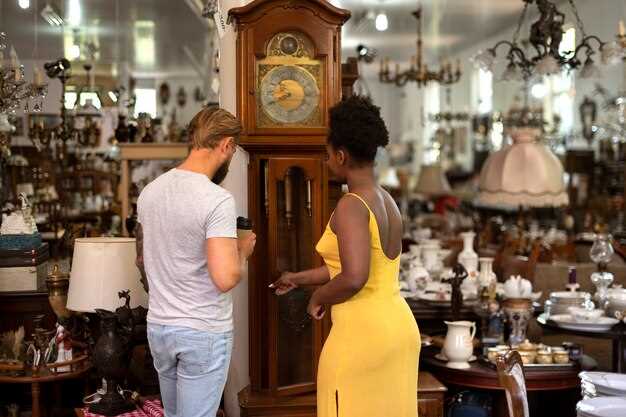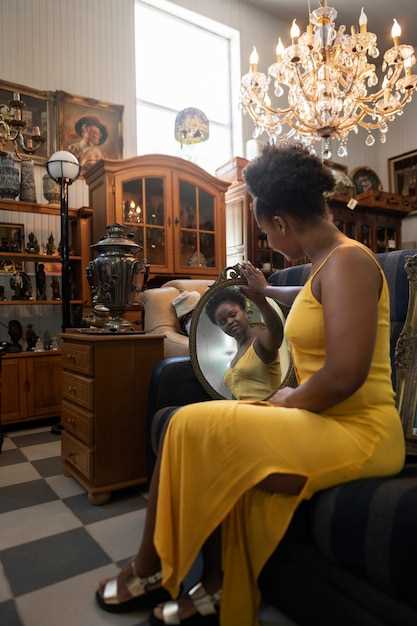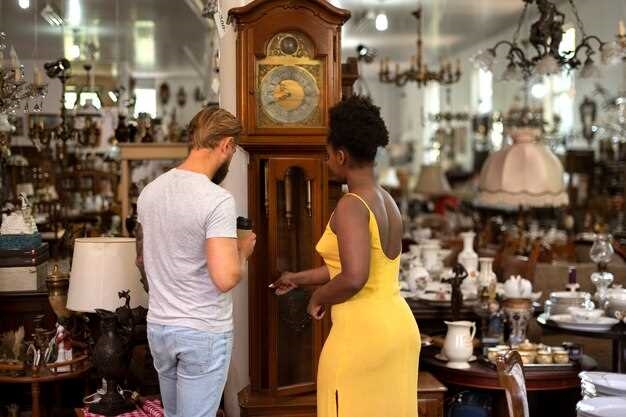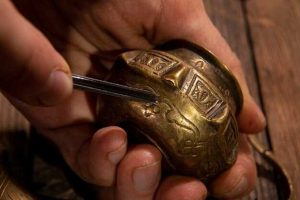
Step into a world where history meets design, where craftsmanship and artistry intertwine to create exquisite pieces that transcend time. Vintage furniture, with its rich heritage and unique character, has the power to transform any space into a haven of elegance and sophistication. In this article, we will delve into the fascinating realm of antique furnishings, offering invaluable insights into the art of identification, restoration, and seamless integration of these timeless treasures into modern decor.
Unveiling the secrets of identifying genuine vintage furniture is like embarking on a thrilling treasure hunt. Each piece holds its own story, waiting to be discovered and cherished. From the intricate carvings to the distinctive materials used, every detail serves as a clue to unravel its origins and historical significance. By honing your eye for craftsmanship and familiarizing yourself with the characteristics of different eras, you can become a connoisseur of antique furniture, able to discern the authentic from the replicas.
Once you have acquired a vintage gem, the journey of restoration begins. Restoring antique furniture requires a delicate balance between preserving its original charm and ensuring its longevity. From cleaning and repairing to refinishing and reupholstering, each step demands meticulous attention to detail and a deep understanding of the materials and techniques used in the past. By enlisting the help of skilled craftsmen or embarking on a DIY adventure, you can breathe new life into these cherished pieces, reviving their former glory while honoring their historical integrity.
Integrating vintage furniture into modern decor is an art form that allows you to create a harmonious blend of the past and the present. By juxtaposing classic pieces with contemporary elements, you can infuse your space with a sense of timeless elegance and individuality. Whether it’s a vintage armchair adding a touch of sophistication to a minimalist living room or an antique dining table becoming the centerpiece of a sleek kitchen, the possibilities are endless. With a keen eye for design and a willingness to experiment, you can create a space that tells a story, where the old and the new coexist in perfect harmony.
Understanding the Value of Antique Furniture
Exploring the intrinsic worth of vintage furnishings goes beyond their mere age and craftsmanship. Antique furniture holds a unique allure that transcends time, embodying the rich history and cultural significance of bygone eras. By delving into the value of these timeless pieces, we gain a deeper appreciation for their aesthetic appeal and historical context.
| 1. Historical Significance | Antique furniture serves as a tangible link to the past, offering insights into the social, economic, and artistic movements of different periods. Each piece carries a story, reflecting the tastes, values, and lifestyles of the people who owned and used them. |
|---|---|
| 2. Craftsmanship and Materials | The exceptional craftsmanship and quality materials used in antique furniture contribute to its enduring value. Skilled artisans of yesteryears employed traditional techniques and fine materials, resulting in pieces that are often more durable and intricately detailed than their modern counterparts. |
| 3. Rarity and Scarcity | As time passes, the availability of antique furniture diminishes, making these pieces increasingly rare and valuable. The limited supply and the uniqueness of each item add to their desirability among collectors and enthusiasts. |
| 4. Design and Style | Antique furniture showcases a wide range of design styles, from ornate and elaborate to minimalistic and sleek. These distinct styles reflect the prevailing artistic movements of their respective periods, making them highly sought after for their aesthetic appeal and ability to complement various interior design schemes. |
| 5. Investment Potential | Antique furniture has proven to be a sound investment over time. With the right knowledge and expertise, acquiring and preserving valuable pieces can yield significant returns. Additionally, the enjoyment and satisfaction derived from owning and displaying these timeless treasures are immeasurable. |
Understanding the value of antique furniture allows us to appreciate the historical, artistic, and monetary significance of these remarkable pieces. Whether you are a collector, decorator, or simply an admirer of the past, incorporating antique furniture into your modern decor adds a touch of elegance and sophistication that transcends trends and stands the test of time.
Key Characteristics for Identifying Antique Furniture
When it comes to identifying antique furniture, there are several key characteristics that can help you determine the age and authenticity of a piece. By understanding these characteristics, you can develop a discerning eye and make informed decisions when purchasing or restoring antique furniture.
1. Construction Techniques

One of the first things to look for when identifying antique furniture is the construction techniques used. Pay attention to the joinery, such as dovetail joints, mortise and tenon joints, and pegged construction. These traditional methods were commonly used in the past and are indicative of older pieces.
2. Materials and Finishes
The materials and finishes used in antique furniture can also provide valuable clues about its age. Look for solid wood construction, as opposed to modern veneers or particleboard. Additionally, examine the type of wood used, as certain species were more commonly used during specific time periods. Pay attention to the finish as well, as older pieces may have a patina or wear that adds to their charm and authenticity.
By familiarizing yourself with these key characteristics, you can confidently identify antique furniture and appreciate the craftsmanship and history behind each piece. Whether you are a collector, a decorator, or simply someone who appreciates the beauty of timeless furniture, understanding these characteristics will enhance your experience and enable you to incorporate antique pieces into your modern decor with style and authenticity.
Common Types of Vintage Furnishings and Their Characteristics
When it comes to incorporating timeless pieces into modern decor, having a good understanding of the common types of vintage furnishings and their unique features is essential. Vintage furniture encompasses a wide range of styles and designs, each with its own distinct characteristics that can add charm and elegance to any space.
| Type of Vintage Furniture | Features |
|---|---|
| Chippendale | Known for its intricate carvings, cabriole legs, and ball-and-claw feet, Chippendale furniture exudes a sense of sophistication and craftsmanship. |
| Victorian | Victorian furniture is characterized by its ornate details, curved lines, and rich upholstery. It often features floral motifs, tufted backs, and elaborate carvings. |
| Art Deco | Art Deco furniture showcases geometric shapes, sleek lines, and luxurious materials. It embraces a modern aesthetic with a touch of glamour and opulence. |
| Mid-Century Modern | Mid-century modern furniture is known for its clean lines, organic forms, and functionality. It often features tapered legs, bold colors, and innovative materials. |
| French Provincial | French Provincial furniture exudes elegance and charm with its delicate carvings, curved lines, and light-colored finishes. It often incorporates floral motifs and cabriole legs. |
| Arts and Crafts | Arts and Crafts furniture emphasizes simplicity, craftsmanship, and natural materials. It features clean lines, sturdy construction, and often showcases exposed joinery. |
These are just a few examples of the common types of vintage furnishings you may come across. By familiarizing yourself with their unique features, you can make informed decisions when selecting and incorporating antique furniture into your modern decor. Remember, vintage pieces can add character and a sense of history to your space, creating a truly timeless and eclectic atmosphere.
Tips for Restoring Antique Furniture to its Former Glory
When it comes to bringing antique furniture back to life, there are several key tips to keep in mind. By following these guidelines, you can restore your cherished pieces to their original beauty and ensure they continue to shine in your modern decor.
1. Preserve the Patina: One of the most important aspects of restoring antique furniture is preserving its unique patina. The patina refers to the natural aging and wear that occurs over time, giving each piece its distinct character. Avoid stripping away this patina, as it adds value and authenticity to the furniture.
2. Repair with Care: When it comes to repairing antique furniture, it’s crucial to handle each task with care. Use appropriate techniques and materials to mend any damages, ensuring that the repairs blend seamlessly with the original craftsmanship. This will help maintain the integrity of the piece.
3. Clean with Caution: Cleaning antique furniture requires a delicate touch. Avoid using harsh chemicals or abrasive materials that could damage the wood or finishes. Instead, opt for gentle cleaning solutions and soft cloths to remove dirt and grime while preserving the furniture’s original beauty.
4. Seek Professional Assistance: If you’re unsure about how to restore a particular piece or if it requires extensive repairs, don’t hesitate to seek professional assistance. Furniture restoration experts have the knowledge and experience to handle complex restoration projects and can ensure your antique furniture is restored to its former glory.
5. Preserve the Original Hardware: The hardware on antique furniture, such as handles, knobs, and hinges, often adds to its charm and value. Whenever possible, try to preserve the original hardware during the restoration process. If replacement is necessary, choose hardware that closely matches the original style to maintain the piece’s authenticity.
6. Protect from Environmental Factors: To keep your restored antique furniture looking its best, take steps to protect it from environmental factors. Avoid placing it in direct sunlight or near sources of heat or moisture, as these can cause damage over time. Additionally, consider using protective coatings or covers to shield the furniture from dust and scratches.
7. Regular Maintenance: Once you’ve restored your antique furniture, regular maintenance is key to preserving its former glory. Dusting regularly, using appropriate furniture polishes, and addressing any minor repairs promptly will help ensure your pieces continue to shine for years to come.
By following these tips, you can restore your antique furniture to its former glory and incorporate these timeless pieces seamlessly into your modern decor. With proper care and attention, these cherished pieces will continue to be admired and enjoyed for generations to come.
Incorporating Antique Furniture into Modern Interior Design
When it comes to creating a unique and timeless interior design, incorporating antique furniture can add a touch of elegance and character to any space. By seamlessly blending the old with the new, you can create a harmonious balance that showcases your personal style and appreciation for history.
One of the key aspects of incorporating antique furniture into modern interior design is to carefully select pieces that complement the overall aesthetic of your space. Whether you prefer a minimalist, Scandinavian-inspired design or a more eclectic and bohemian look, there are antique furniture options available to suit every style.
- Consider incorporating a vintage wooden dining table with sleek, modern chairs for a contemporary twist on a classic look.
- Pair an antique chaise lounge with a modern floor lamp and abstract artwork to create a cozy reading nook with a touch of vintage charm.
- Integrate an antique chest of drawers into a modern bedroom design for a unique storage solution that adds character and functionality.
Another important aspect to consider when incorporating antique furniture into modern interior design is the placement and arrangement of the pieces. By strategically placing antique furniture in key areas of your space, you can create focal points that draw attention and create visual interest.
Additionally, don’t be afraid to mix and match different styles and eras. Combining antique furniture with contemporary pieces can create a dynamic and eclectic look that showcases your individuality and design sensibility.
Lastly, it’s important to properly care for and maintain your antique furniture to ensure its longevity and beauty. Regular cleaning, polishing, and restoration can help preserve the integrity of the pieces and keep them looking their best.
Incorporating antique furniture into modern interior design is a creative and rewarding process that allows you to showcase your unique style and appreciation for history. By carefully selecting and placing these timeless pieces, you can create a space that is both visually stunning and full of character.
Where to Find and Purchase Authentic Antique Furniture
Discovering and acquiring genuine vintage furniture pieces can be an exciting endeavor for those who appreciate the charm and history they bring to a space. If you are on the lookout for authentic antique furniture to add character and elegance to your home, there are several avenues you can explore.
One option is to visit local antique shops and flea markets, where you can often find a wide selection of unique and timeless pieces. These establishments are treasure troves of vintage furniture, offering a variety of styles and periods to suit different tastes. Exploring these venues allows you to physically examine the furniture, appreciate its craftsmanship, and envision how it could enhance your living space.
Another avenue to consider is online marketplaces and auction websites. The internet has made it easier than ever to connect with antique dealers and collectors from around the world. Online platforms provide a vast array of antique furniture options, allowing you to browse through extensive catalogs and compare prices. However, it is crucial to exercise caution and ensure the authenticity of the pieces before making a purchase.
Attending estate sales and auctions can also be a fruitful way to find authentic antique furniture. These events often feature furniture from well-preserved estates or private collections, offering a glimpse into the past and the opportunity to acquire truly remarkable pieces. Estate sales and auctions provide a unique experience, allowing you to witness the excitement of bidding and potentially securing a coveted item.
Additionally, seeking advice from antique experts and professionals in the field can be invaluable. They possess extensive knowledge and experience in identifying and appraising antique furniture. Consulting with these experts can help you navigate the market, understand the value of different pieces, and make informed decisions when purchasing.
Remember, the search for authentic antique furniture requires patience, research, and a discerning eye. By exploring various avenues, both physical and virtual, and seeking guidance from experts, you can embark on a rewarding journey to find and purchase timeless pieces that will enhance your modern decor and become cherished heirlooms for generations to come.

